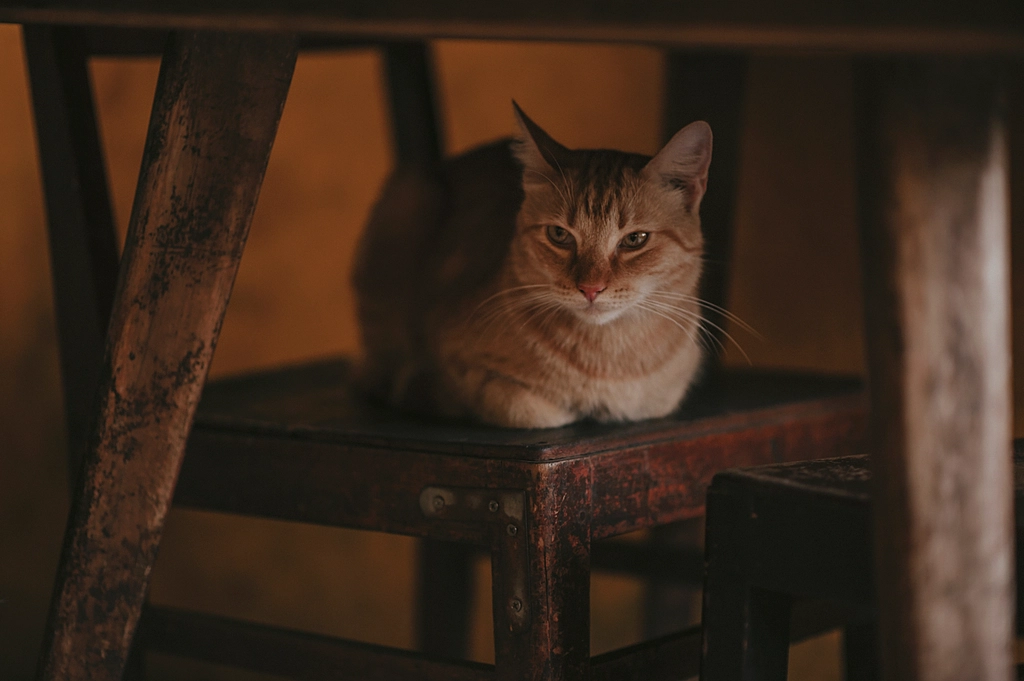Have you ever noticed your cat quietly settling just a few inches away from your side—close enough to feel their presence, but not quite close enough to touch? It’s a sweet, slightly mysterious behavior that leaves many cat lovers wondering: do cats adore us from afar for a special reason, or is this just another one of their quirky habits? Understanding why cats choose to sit nearby but not always cuddle up can reveal fascinating insights into the feline mind. Let’s dive into the secret language of your cat’s “almost-there” snuggles and discover what your furry companion is trying to tell you.
The Language of Feline Affection

Cats have a unique way of expressing their love and trust. Unlike dogs, who often show affection through overt physical contact, cats are more subtle. Sitting close but not touching is a classic example of a cat’s understated affection. It’s their way of saying, “I feel safe with you,” without losing their sense of independence. This behavior can feel puzzling, but for cats, proximity is a powerful sign of trust. They’re choosing to be near you, which is a significant gesture in their social world. Even if they’re not curled up in your lap, their closeness speaks volumes about their comfort and bond with you.
Respecting Personal Space

Much like people, cats value their personal space. While they might crave your company, they also need a buffer zone to feel secure. This need for space is deeply rooted in their wild ancestry, where staying alert and maintaining a safe distance could mean the difference between life and death. Sitting near you, but not on you, allows them to enjoy your presence while still feeling in control of their environment. It’s a gentle balance: close enough for companionship, but far enough away for peace of mind. Understanding this can make your relationship with your cat feel more respectful and harmonious.
The Influence of Mood and Personality

Every cat is an individual, and their approach to closeness often depends on their personality and current mood. Some cats are naturally more outgoing and cuddly, while others are shy or independent. A reserved cat might sit near you as a way of slowly building trust, testing the waters before moving closer. Others may simply prefer observing the world from a secure distance. Your cat’s mood also plays a role; on some days they may be more inclined to seek your touch, while at other times, just being near you is enough. Paying attention to these subtle shifts can deepen your understanding of your feline friend.
Temperature and Comfort Zones

Cats are experts at seeking comfort, and temperature often influences where and how they sit. On a warm day, your body heat might be a little too much, prompting your cat to settle nearby rather than directly on you. Conversely, in colder weather, you might find your cat snuggled up closer for warmth. Their choice of where to sit is often a delicate calculation between wanting your company and keeping themselves comfortable. So, if your cat is lounging nearby but not touching, it could simply be their way of balancing affection with the perfect temperature.
Territorial Instincts at Play

Cats are territorial creatures, and their choice of sitting spot often reflects this instinct. By sitting close to you but not on you, your cat may be marking their territory while keeping an eye on their domain. They like to keep a vantage point from which they can observe both you and their environment. This behavior helps them feel secure, as they can quickly react to any changes or potential threats. It’s a subtle form of watchfulness that also serves as a quiet compliment—you’re part of their chosen territory, and they want to keep you in sight.
Social Bonding Without Overstimulation

Cats are sensitive to touch and can easily become overstimulated by too much petting or physical contact. Sitting close, but not touching, allows them to enjoy your company without the risk of sensory overload. For many cats, being near you is a way to bond and share time together on their own terms. They can listen to your voice, watch your movements, and even nap peacefully, all while feeling connected but not overwhelmed. This gentle form of companionship is one of the most endearing aspects of living with a cat.
Trust Takes Time and Practice

Building trust with a cat is a gradual process. When your cat sits close but avoids direct contact, it might be their way of getting used to your presence. Over time, as trust deepens, you may notice them moving closer or even initiating more physical contact. Every small step—whether it’s inching a bit nearer or resting a paw on your leg—is a sign of growing confidence and attachment. Patience is key; respecting their pace will help foster a stronger, more trusting relationship in the long run.
Reading Your Cat’s Subtle Signals

Understanding your cat’s behavior requires careful observation. Their body language, ear position, and even the way they flick their tail can offer clues about how they’re feeling. When a cat sits close, watch for signs of relaxation, such as slow blinking, purring, or a softly curled tail. These are positive indicators that your cat enjoys your company. On the other hand, a tense posture or twitching tail might suggest they need a little more space. Learning to read these subtle signals can turn your daily interactions into a richer, more meaningful bond with your feline companion.

Growing up traveling and experiencing new cultures and wonders, I have had a passion for nature, adventuring, photography, and videography. I am currently working towards a BSc in Biodiversity and Ecology at Stellenbosch University, and I hope to specialise in Marine Sciences one day.
Please send any feedback to Feedback@animalsaroundtheglobe.com





